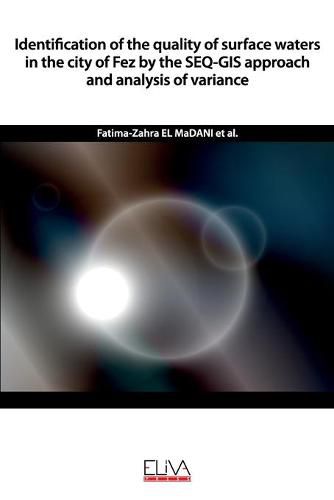Readings Newsletter
Become a Readings Member to make your shopping experience even easier.
Sign in or sign up for free!
You’re not far away from qualifying for FREE standard shipping within Australia
You’ve qualified for FREE standard shipping within Australia
The cart is loading…






In Morocco, water resource conservation has become a priority, due to the diversity of potential sources of its pollution. To date, the city of Fez is experiencing dynamic industrial, artisanal and large farming with extensive use of toxic chemicals, part of which is carried by the water nearby in Wadis or infiltrated by the soil into groundwater. This threatens ominously and alarming environmental and man. The objective of this study is, firstly, to identify the most polluted areas near polluting industries estimated the city of Fez, and secondly, know their impact on the quality of surface waters in the city of Fez. For this, we performed a thorough diagnosis of the activities of all industrial areas of the city to determine the points of water samples to identify their quality. Next, we performed a spatiotemporal monitoring of the quality of these waters for 6 months of 2017 by the SEQ-GIS approach and statistical analysis of variance (ANOVA). The diagnostic results show that the city of Fez consists of five main business areas of variables and different activities: Ain Nokbi, Sidi Boujida, Dokkarat, Bensouda and Sidi Brahim. Wadis through the raised areas are respectively Wadi Tghat, wadi Zhoun, wadi Fez upstream, wadi Ain Smen and wadi Lmahraz and are characterized by strong organic fillers, mineral, metal and fecal contamination. The most polluted Wadis are located in the wadi downstream Fez (Tghat and Zhoun) mainly to industrial districts Ain Nokbi (S1) and Sidi Boujida (S2). The evaluation of their quality by coupling techniques Evaluation Systems Quality and Geographical Information and ANOVA statistical analysis reveals that they are of very poor quality.
$9.00 standard shipping within Australia
FREE standard shipping within Australia for orders over $100.00
Express & International shipping calculated at checkout
In Morocco, water resource conservation has become a priority, due to the diversity of potential sources of its pollution. To date, the city of Fez is experiencing dynamic industrial, artisanal and large farming with extensive use of toxic chemicals, part of which is carried by the water nearby in Wadis or infiltrated by the soil into groundwater. This threatens ominously and alarming environmental and man. The objective of this study is, firstly, to identify the most polluted areas near polluting industries estimated the city of Fez, and secondly, know their impact on the quality of surface waters in the city of Fez. For this, we performed a thorough diagnosis of the activities of all industrial areas of the city to determine the points of water samples to identify their quality. Next, we performed a spatiotemporal monitoring of the quality of these waters for 6 months of 2017 by the SEQ-GIS approach and statistical analysis of variance (ANOVA). The diagnostic results show that the city of Fez consists of five main business areas of variables and different activities: Ain Nokbi, Sidi Boujida, Dokkarat, Bensouda and Sidi Brahim. Wadis through the raised areas are respectively Wadi Tghat, wadi Zhoun, wadi Fez upstream, wadi Ain Smen and wadi Lmahraz and are characterized by strong organic fillers, mineral, metal and fecal contamination. The most polluted Wadis are located in the wadi downstream Fez (Tghat and Zhoun) mainly to industrial districts Ain Nokbi (S1) and Sidi Boujida (S2). The evaluation of their quality by coupling techniques Evaluation Systems Quality and Geographical Information and ANOVA statistical analysis reveals that they are of very poor quality.